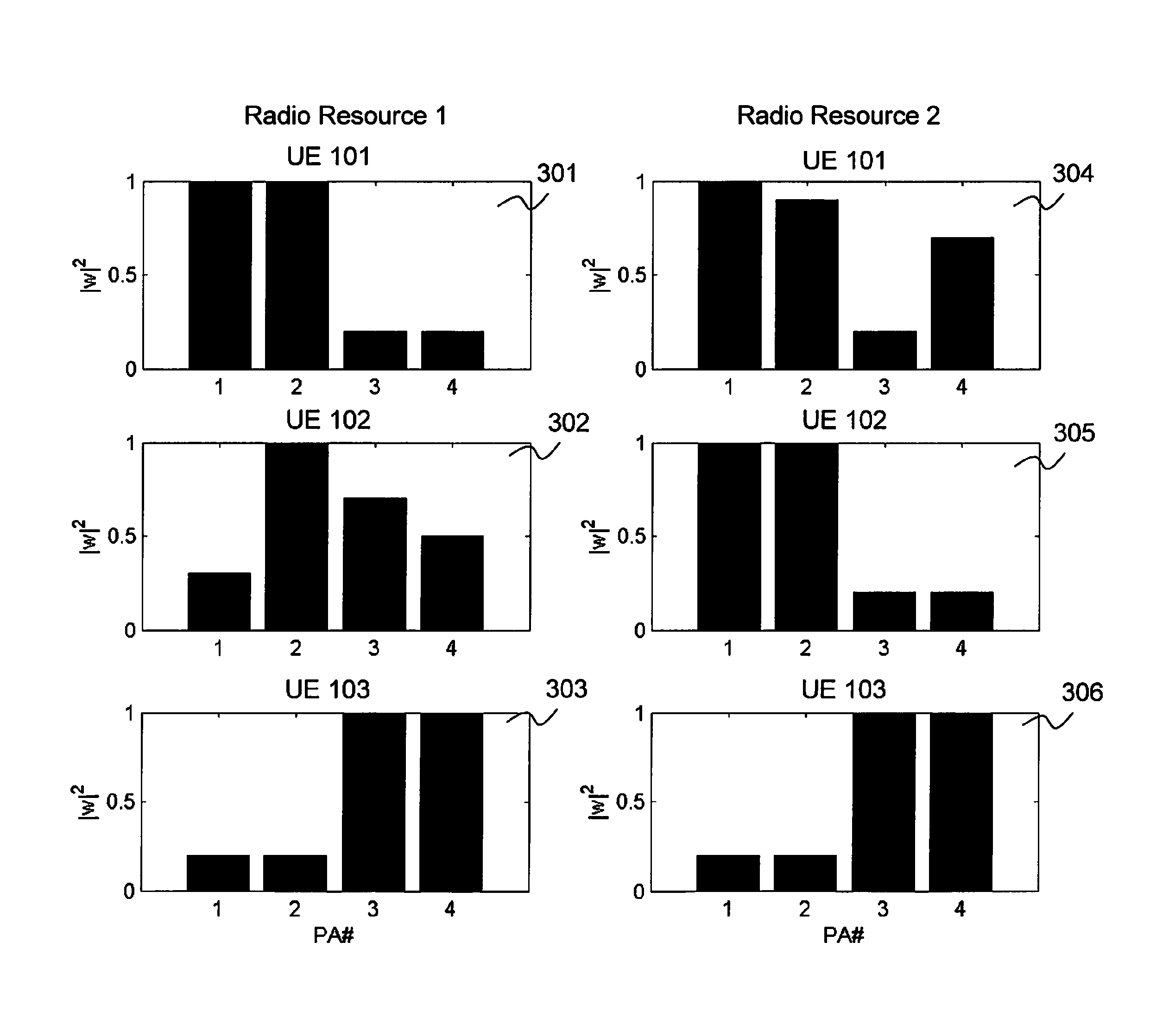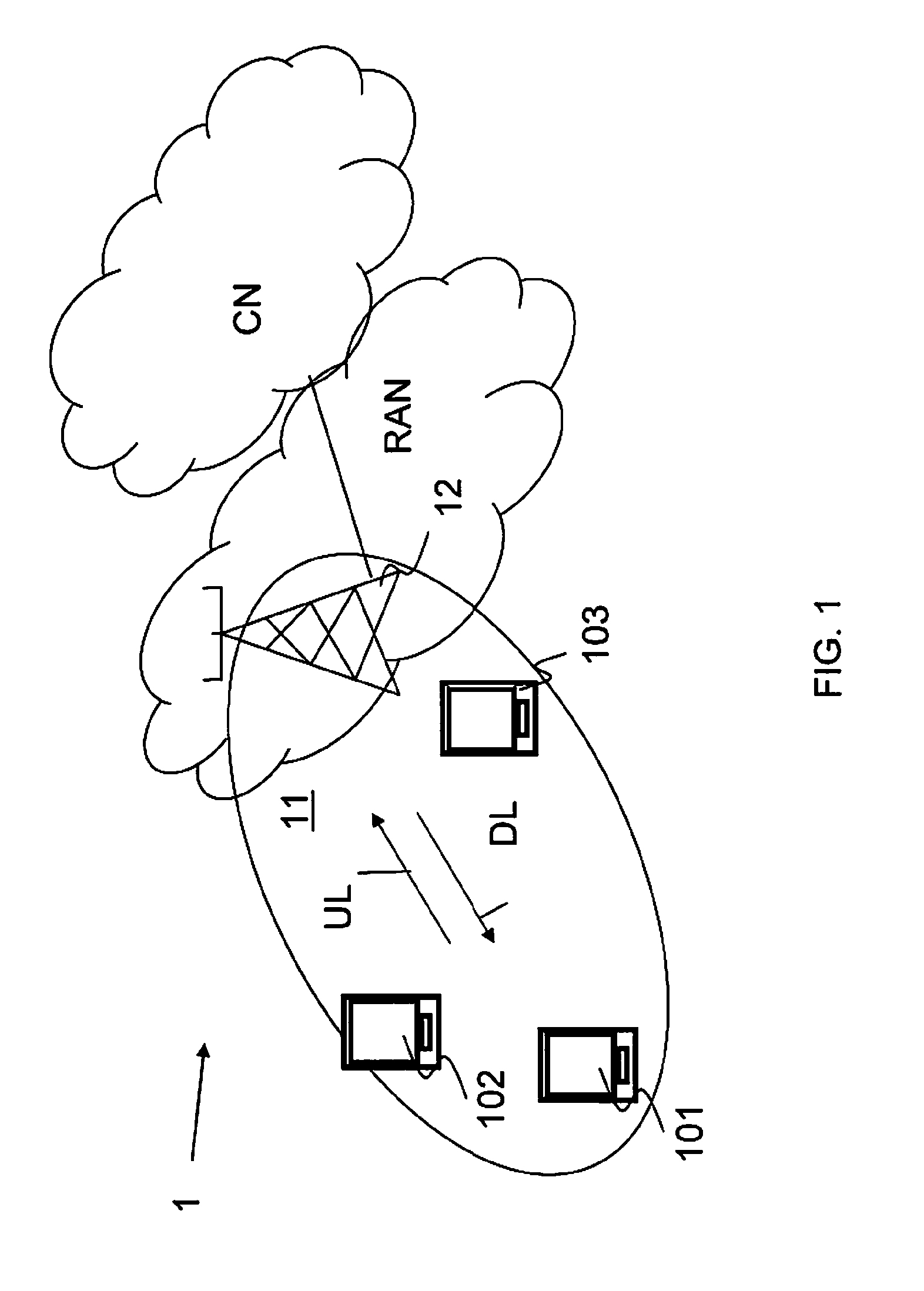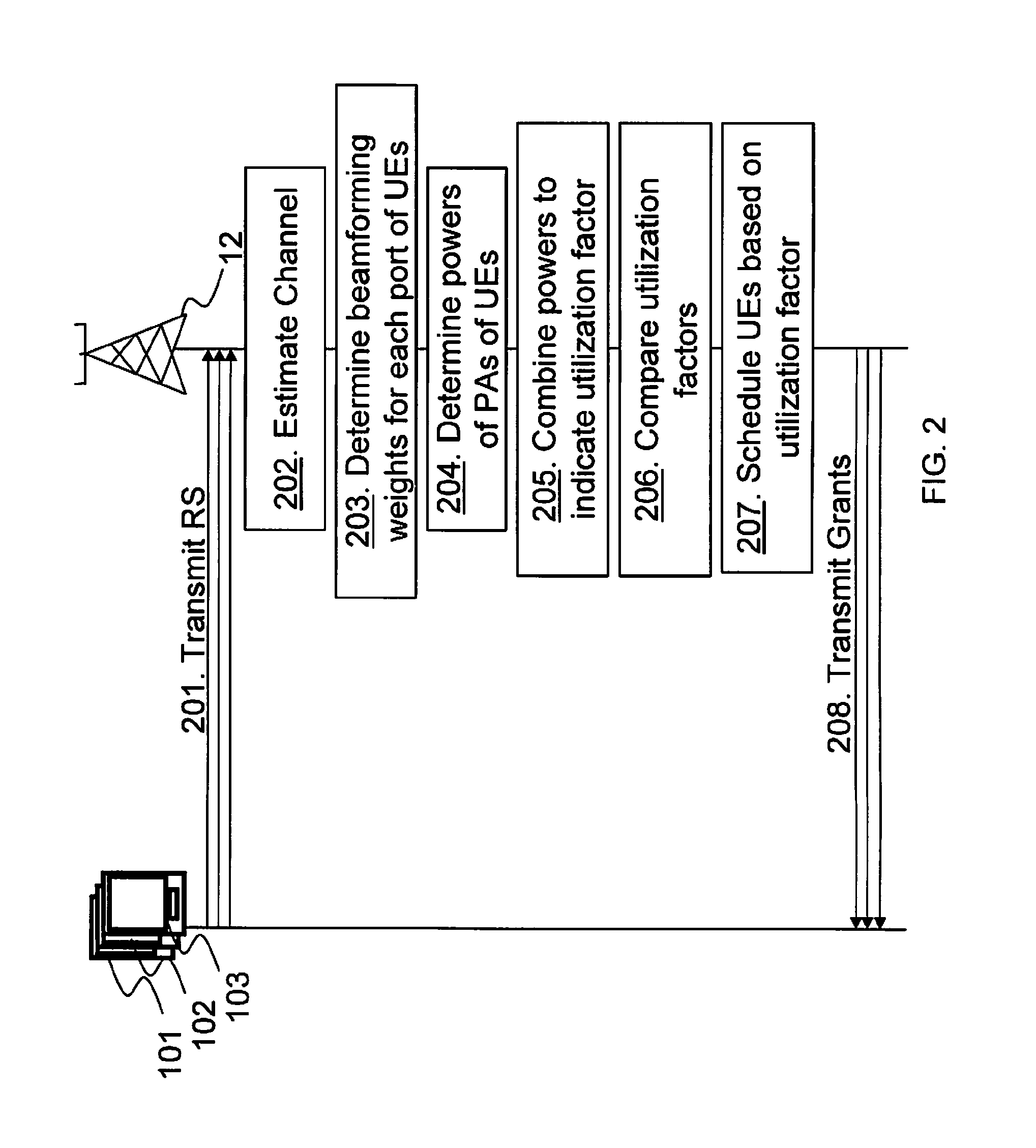Radio network node and method therein
a radio network and node technology, applied in the field of radio network nodes, can solve the problems of poor utilization of pa resources, inability to apply real-time methods, and complicated optimization problems, and achieve the effect of improving the utilization rate of power amplifiers
- Summary
- Abstract
- Description
- Claims
- Application Information
AI Technical Summary
Benefits of technology
Problems solved by technology
Method used
Image
Examples
Embodiment Construction
[0017]FIG. 1 is a schematic overview depicting a radio communications network 1 according to embodiments herein. The radio communications network 1 may be an LTE-advanced network, an LTE network, Universal Terrestrial Radio Access Network (UTRAN)-General Packet Radio Service (GPRS) network, a WCDMA network, a Code Division Multiple Access (CDMA) 2000 network, an Interim Standard 95 (IS-95) network, a Digital-Advanced Mobile Phone Service (D-AMPS) network but is exemplified below as an LTE network.
[0018]The radio communications network 1 comprises a radio network node 12 exemplified in FIG. 1 as a radio base station in a Radio Access Network (RAN). The RAN provides access to a Core Network (CN). The radio network node 12 serves or controls radio resources over a geographical area forming a cell 11.
[0019]User equipments, a first user equipment 101, a second user equipment 102, and a third user equipment 103, are served in the cell 11 by the radio network node 12. It should be understo...
PUM
 Login to View More
Login to View More Abstract
Description
Claims
Application Information
 Login to View More
Login to View More - R&D
- Intellectual Property
- Life Sciences
- Materials
- Tech Scout
- Unparalleled Data Quality
- Higher Quality Content
- 60% Fewer Hallucinations
Browse by: Latest US Patents, China's latest patents, Technical Efficacy Thesaurus, Application Domain, Technology Topic, Popular Technical Reports.
© 2025 PatSnap. All rights reserved.Legal|Privacy policy|Modern Slavery Act Transparency Statement|Sitemap|About US| Contact US: help@patsnap.com



